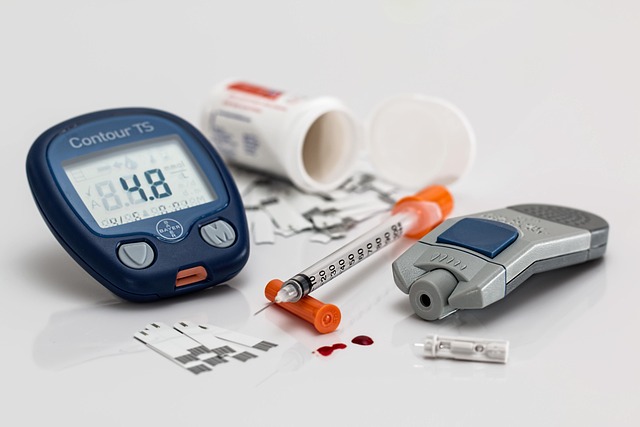Hemoglobinuria: Unexpected Signals You Must Not Ignore
Hemoglobinuria is a rare but serious condition that may silently signal underlying health issues. While often unnoticed in early stages, certain unexpected symptoms could point to a more significant problem. Understanding these signs is essential for timely diagnosis and treatment. This article uncovers the key warning signals of hemoglobinuria and what they could mean for your health.

When hemoglobin appears in urine, it creates a distinctive discoloration that ranges from pink to dark brown, depending on concentration. This condition, known as hemoglobinuria, occurs when red blood cells break down excessively, releasing hemoglobin that filters through the kidneys. Unlike hematuria, where intact red blood cells appear in urine, hemoglobinuria involves the protein component itself. Understanding this distinction is crucial for proper diagnosis and treatment, particularly when dealing with conditions like paroxysmal nocturnal hemoglobinuria (PNH), which causes episodes of red blood cell destruction primarily during sleep.
What Are Early Signs of Hemoglobinuria You Might Overlook?
Early indicators of hemoglobinuria can be subtle and easily dismissed. The most obvious sign is dark or discolored urine, particularly noticeable in the morning after overnight concentration. However, many people overlook accompanying symptoms such as unexplained fatigue, shortness of breath, and pale skin, which result from reduced oxygen-carrying capacity due to red blood cell loss. Some individuals experience back or abdominal pain during hemolytic episodes, which occurs when red blood cells rupture rapidly. Headaches, difficulty swallowing, and erectile dysfunction in men may also present in cases of paroxysmal nocturnal hemoglobinuria. These seemingly unrelated symptoms often go unreported until the condition progresses, delaying crucial diagnosis and intervention.
How Hemoglobinuria Could Indicate a Deeper Health Issue
Hemoglobinuria rarely exists in isolation; it typically signals underlying pathology requiring investigation. Paroxysmal nocturnal hemoglobinuria represents a rare acquired disorder where defective red blood cells become vulnerable to immune system attack, particularly during sleep when blood pH changes slightly. Beyond PNH, hemoglobinuria may indicate autoimmune hemolytic anemia, where the body mistakenly destroys its own red blood cells. Transfusion reactions, certain medications, severe infections like malaria, and even intense physical exertion can trigger hemolysis. Kidney disorders may also contribute when damaged renal tissue allows hemoglobin to pass into urine. In some cases, hemoglobinuria accompanies thrombosis, as damaged red blood cells release substances promoting blood clot formation. The connection between hemoglobinuria and these serious conditions underscores why prompt medical evaluation is essential when this symptom appears.
Important Diagnostic Steps for Detecting Hemoglobinuria Early
Accurate diagnosis requires a systematic approach combining clinical assessment with laboratory testing. Initial evaluation includes a detailed medical history and physical examination, focusing on symptom patterns and potential triggers. Urinalysis serves as the first-line diagnostic tool, distinguishing hemoglobinuria from hematuria through microscopic examination and chemical testing. A complete blood count reveals anemia severity and reticulocyte levels, indicating how actively the bone marrow compensates for red blood cell loss. Flow cytometry testing specifically identifies PNH by detecting cells lacking certain surface proteins. Additional tests may include lactate dehydrogenase levels, which elevate during hemolysis, and haptoglobin measurements, which decrease as this protein binds free hemoglobin. Imaging studies and bone marrow biopsy may be necessary in complex cases. Early detection through these diagnostic steps enables timely intervention, potentially preventing complications like kidney damage, thrombosis, and severe anemia.
Myths About Hemoglobin in Urine and How to Approach Them
Several misconceptions surround hemoglobinuria, potentially delaying appropriate care. One common myth suggests that occasional dark urine after exercise is always harmless, yet persistent or recurrent episodes warrant investigation. Another misconception holds that hemoglobinuria only affects older adults, when in reality, conditions like PNH can develop at any age, with median diagnosis occurring in the thirties. Some believe dietary changes alone can resolve hemoglobinuria, but while hydration helps protect kidneys, addressing the underlying cause requires medical treatment. The notion that hemoglobinuria always causes noticeable symptoms is also false; mild cases may present minimal signs while still causing cumulative damage. Approaching these myths requires patient education emphasizing that hemoglobinuria represents a symptom, not a standalone condition, and that professional medical evaluation determines appropriate management. Dismissing persistent urinary changes as insignificant can allow treatable conditions to progress unnecessarily.
Treatment Options for Nocturnal Hemoglobinuria
Managing paroxysmal nocturnal hemoglobinuria has evolved significantly with targeted therapies now available. Complement inhibitors represent the primary treatment approach, blocking the immune system component that destroys defective red blood cells. Eculizumab, the first approved medication in this class, requires intravenous administration every two weeks following an initial loading phase. Ravulizumab offers extended dosing intervals of eight weeks, improving convenience while providing similar efficacy. These medications significantly reduce hemolysis, decrease transfusion requirements, and lower thrombosis risk. For patients with inadequate response or specific complications, additional treatments include supportive care with blood transfusions, folic acid supplementation to support red blood cell production, and anticoagulation therapy to prevent blood clots. Bone marrow transplantation remains the only curative option but carries substantial risks, typically reserved for severe cases or younger patients with suitable donors. Treatment selection depends on disease severity, symptom burden, complication history, and individual patient factors. Regular monitoring ensures therapy effectiveness and allows adjustment as needed.
| Treatment Type | Administration Method | Key Considerations |
|---|---|---|
| Eculizumab | IV infusion every 2 weeks | First-line complement inhibitor, requires meningococcal vaccination |
| Ravulizumab | IV infusion every 8 weeks | Extended dosing interval, similar efficacy to eculizumab |
| Blood Transfusions | As needed | Supportive care for severe anemia |
| Anticoagulation | Daily oral or injectable | Prevents thrombosis in high-risk patients |
| Bone Marrow Transplant | One-time procedure | Curative but high-risk option |
Managing Long-Term Health with Hemoglobinuria
Living with conditions causing hemoglobinuria requires ongoing medical supervision and lifestyle adjustments. Regular follow-up appointments monitor disease activity, treatment response, and potential complications. Patients should maintain adequate hydration, avoid known triggers when identified, and report new symptoms promptly. Vaccinations become particularly important, especially meningococcal vaccines for those receiving complement inhibitors, as these medications increase infection susceptibility. Genetic counseling may benefit families when hereditary conditions are identified. Support groups and patient advocacy organizations provide valuable resources for education and connection with others facing similar challenges. While hemoglobinuria and its underlying causes can significantly impact quality of life, advances in diagnosis and treatment have improved outcomes substantially. Proactive management, adherence to prescribed therapies, and open communication with healthcare providers optimize long-term health and minimize complications.
This article is for informational purposes only and should not be considered medical advice. Please consult a qualified healthcare professional for personalized guidance and treatment.




